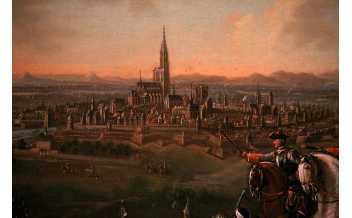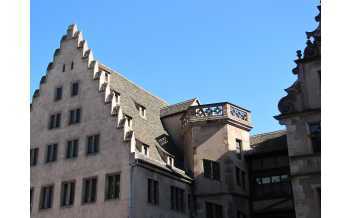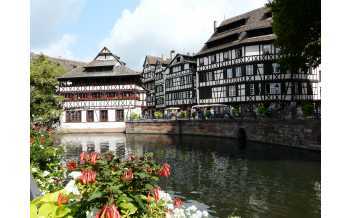Activities
-
Alsatian Museum, Strasbourg, France
Wander around and browse thousands of objects that offer an insight into...
-
Church Saint-Pierre-le-Jeune, Strasbourg,...
The Church of Saint-Pierre-le-Jeune still serves as a Protestant church and...
-
Historical Museum, Strasbourg, France
Visitors will learn about Strasbourg's politics, society, and economy...
-
Maison de l'Oeuvre Notre-Dame, Strasbourg,...
Situated at the foot of the Cathedral, the Œuvre Notre-Dame Museum offers a...
-
Museum of Modern & Contemporary Art,...
A must-see attraction for those who appreciate modern art, the museum boasts...
-
Palace of Europe, Strasbourg, France
Strasbourg was chosen as the capital of the European Union because the city...
-
Palais Rohan, Strasbourg, France
The elegant 18th-century Palais Rohan was the former residence of the...
-
Parc de l'Orangerie, Strasbourg, France
The oldest park in Strasbourg was created in the early 19th century for the...
-
Place Gutenberg, Strasbourg, France
The Place Gutenberg is found on the Grande-Île, a short walk from the cathedral.
-
Ponts Couverts, Strasbourg, France
Heralding your entry to Petite France is a set of three fortified bridges...
-
St Thomas' Church, Strasbourg, France
A Lutheran church classified as a Monument Historique by the French Ministry...
-
Strasbourg Cathedral, Strasbourg, France
One of the most beautiful examples of Gothic architecture in Europe with its...
-
Synagogue de la Paix, Strasbourg, France
Built in 1954, the Synagogue de la Paix was created to replace the historic...
-
Tanner's Quarter, Strasbourg, France
The Quartier des Tanneurs, known as "La Petite France" is the most...
-
The Kammerzell House, Strasbourg, France
Considered a gem of Alsatian architecture, the Maison Kammerzell (built...
-
Vauban Dam, Strasbourg, France
Despite being built in the 1600s this fortified bridge and weir on the River...





















